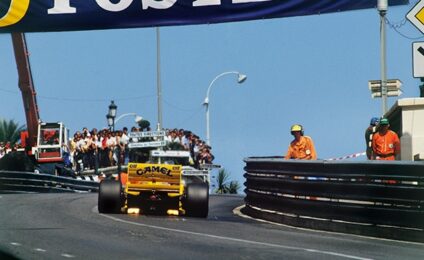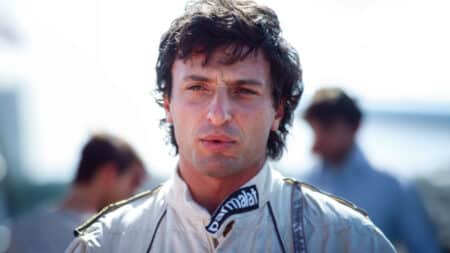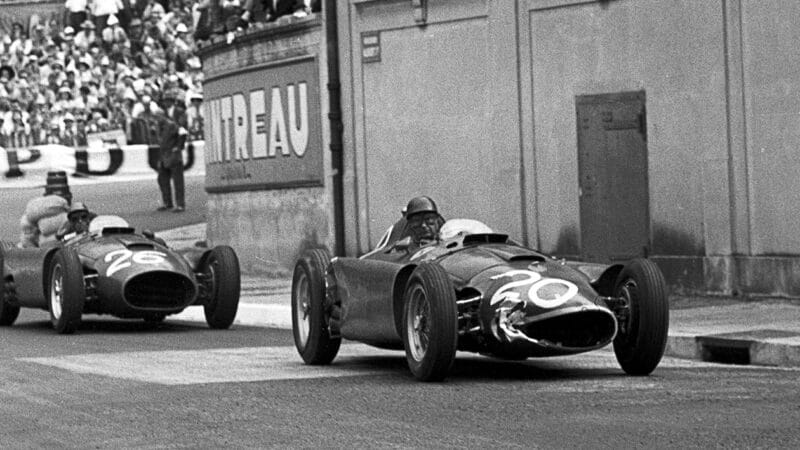The 1988 Monaco GP had been Senna’s race from the first moments of unofficial practice. He qualified on pole, nearly 1.5sec faster than his McLaren-Honda team-mate, Alain Prost, leapt into the lead at the start and opened up an advantage of nearly a minute. Then, with only 12 laps to go, he clipped the inside barrier at Portier and lost control. On another circuit he might have got away with it. At Monaco he didn’t.
It didn’t seem possible that driver error was the cause, not the way Senna had been performing all weekend. That’s the way it seemed to the man himself, who walked straight to his nearby apartment and shut himself away, rather than making his way back to the pits.
Alain Prost, Imola 1991
Prost won that day, but even the man they called the Professor had his days of ignominy. One I remember with particular clarity was the 1991 San Marino GP, when he managed to lose control of his Ferrari on the parade lap. Admittedly, it was streaming with rain and he wasn’t the only driver to skate off on the grass; Gerhard Berger‘s McLaren did much the same thing. But Prost was the only one to stall, his race over before it had started. And remember, this was Italy…
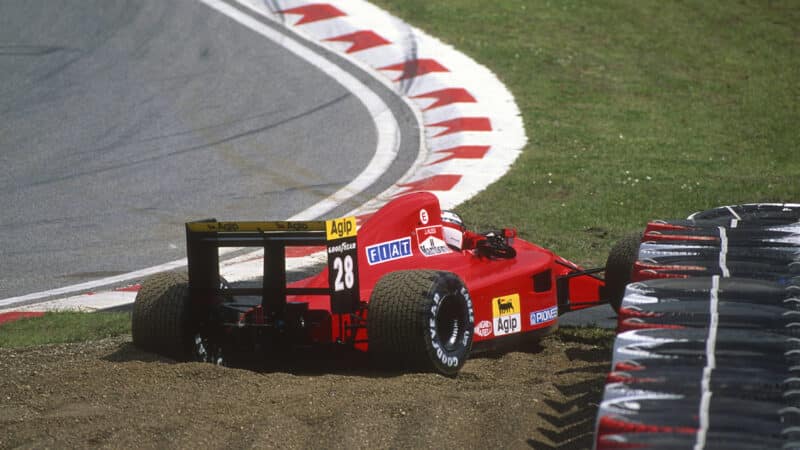
Alesi’s crash was the last straw for tifosi at Imola in 1991
Grand Prix Photo
I was watching the race with the teeming hordes of Ferrari fans on the hill at Tosa, and when Jean Alesi in the second Ferrari slid off at the hairpin on the third lap, I suddenly found myself with a great deal more elbow room. They left in droves and their disgust with their drivers, especially Prost, was unmistakable. A few months before, he had almost given the team the World Championship, but I don’t think the Italian fans or press ever forgave this mistake.
Jim Clark, Nürburgring 1962
Another cause of gaffes by the greats is what might be called ‘finger trouble’ — hitting the wrong switch, or indeed, forgetting to hit it at all. Jim Clark watched the rest of the German GP field and his 1962 world title hopes roar into the distance as he sat stationary on the grid wondering what was wrong with his Lotus 25. He had forgotten to switch on the fuel pumps. It was a race he could have won and not even a heroic drive to fourth place could disguise that.
Nigel Mansell, Montreal 1991
And was it finger trouble that prevented Nigel Mansell from winning the 1991 Canadian GP? The official explanation from the Williams-Renault team was that during the last lap, with Mansell cruising around and waving to the crowd after having dominated the race, he let the revs drop too far and the engine’s electronic brain, assuming that it was all over, switched itself off.
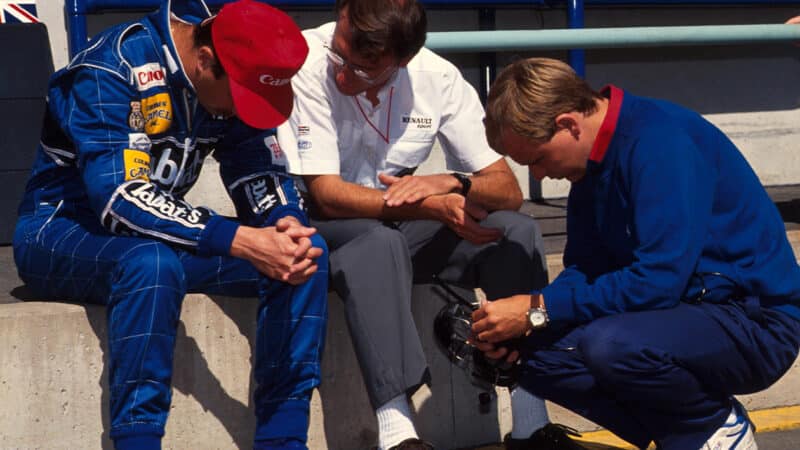
Mansell tries to work out where his Canadian GP victory was lost on the final lap
Sutton Images
Whether the problem lay in Mansell’s fingertips, the weight of this right foot, or the way the engine’s systems were programmed, it was an almighty stupid way to throw a GP win down the drain. But like all the best blunders it had its funny side, like a spectacular own goal in football, or a cricketer who is given out for falling on his stumps.
Chris Amon, Monza 1971
Perhaps nobody did it better than Chris Amon, a true specialist in the art of snatching defeat from the jaws of victory. To be fair to Amon, he never enjoyed a great deal of what you might call mechanical luck, but even when his car did hold up there was something inevitable about him not making it to the chequered flag first. At Monza in 1971 he finally appeared to have kicked the habit, breaking clear of the slipstreaming group in the closing stages. Then he tried to remove his outer visor (no tear-off strips in those days), and pulled the inner one away with it. He finished sixth, his exposed eyes streaming.

Chris Amon had broken clear of the slipstreaming pack when he reached for his visor…
David Phipps / Sutton Images
Bill Holland, Indianapolis 1947
Few self-inflicted wounds have been as painful as that experienced by Bill Holland in the 1947 Indianapolis 500. At the 400-mile mark he led by almost a lap from his team-mate, Marui Rose, but Holland, making his first appearance at the Speedway, was misreading the driver’s scoreboard on the pit-straight Under the impression that he had more than a lap in hand he cut his speed and with only seven laps to go, waved Rose through, he thought, to unlap himself. In fact, Rose had moved into the lead, something that only dawned on Holland when he found Victory Lane occupied at the end of the race. Holland would win the 500 two years later, but even that didn’t assuage the memory of how he lost in his rookie year.
Riccardo Patrese, Imola 1983
Riccardo Patrese laid a significant ghost to rest when he won the 1990 San Marino GP for Williams-Renault.

